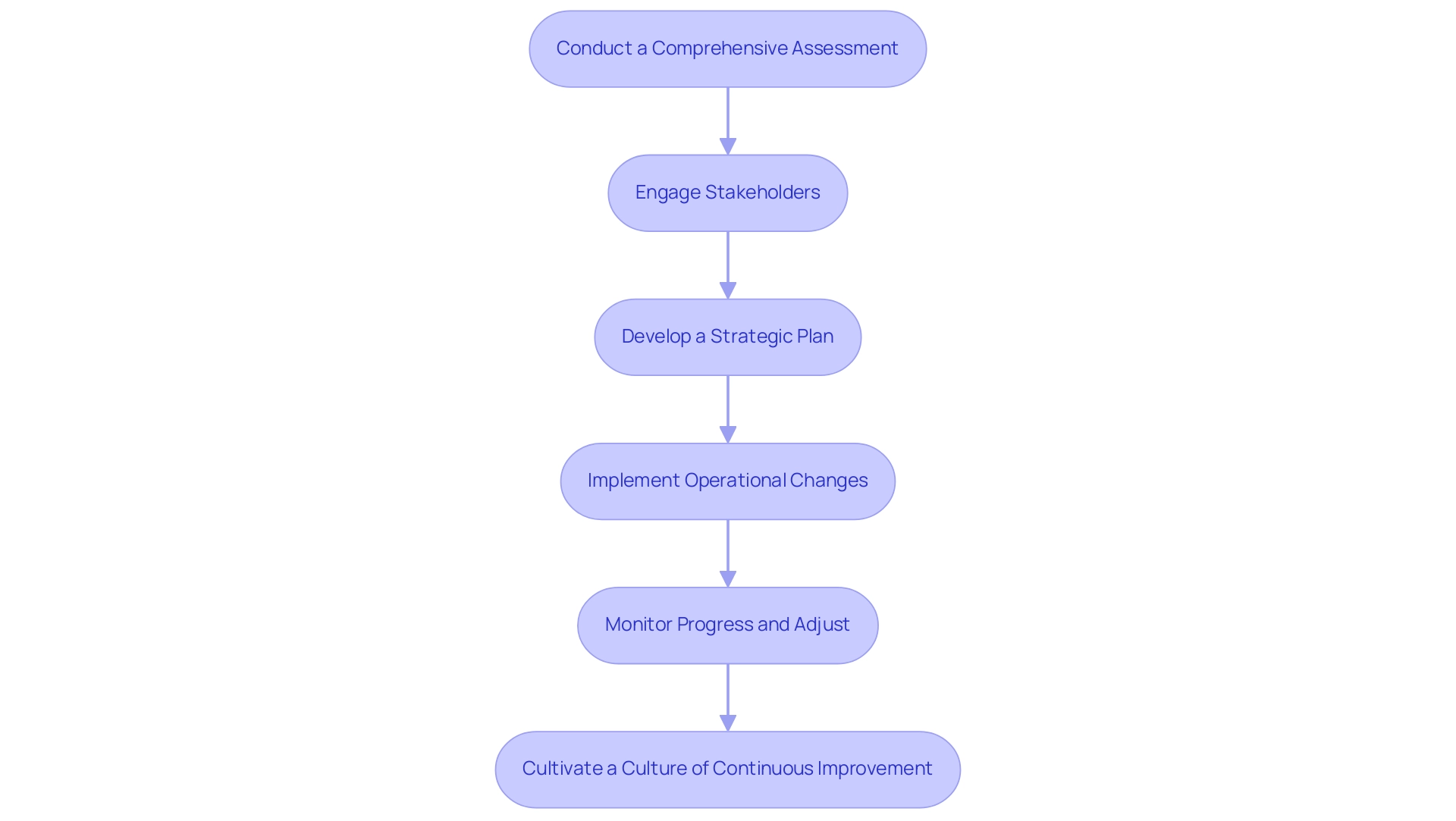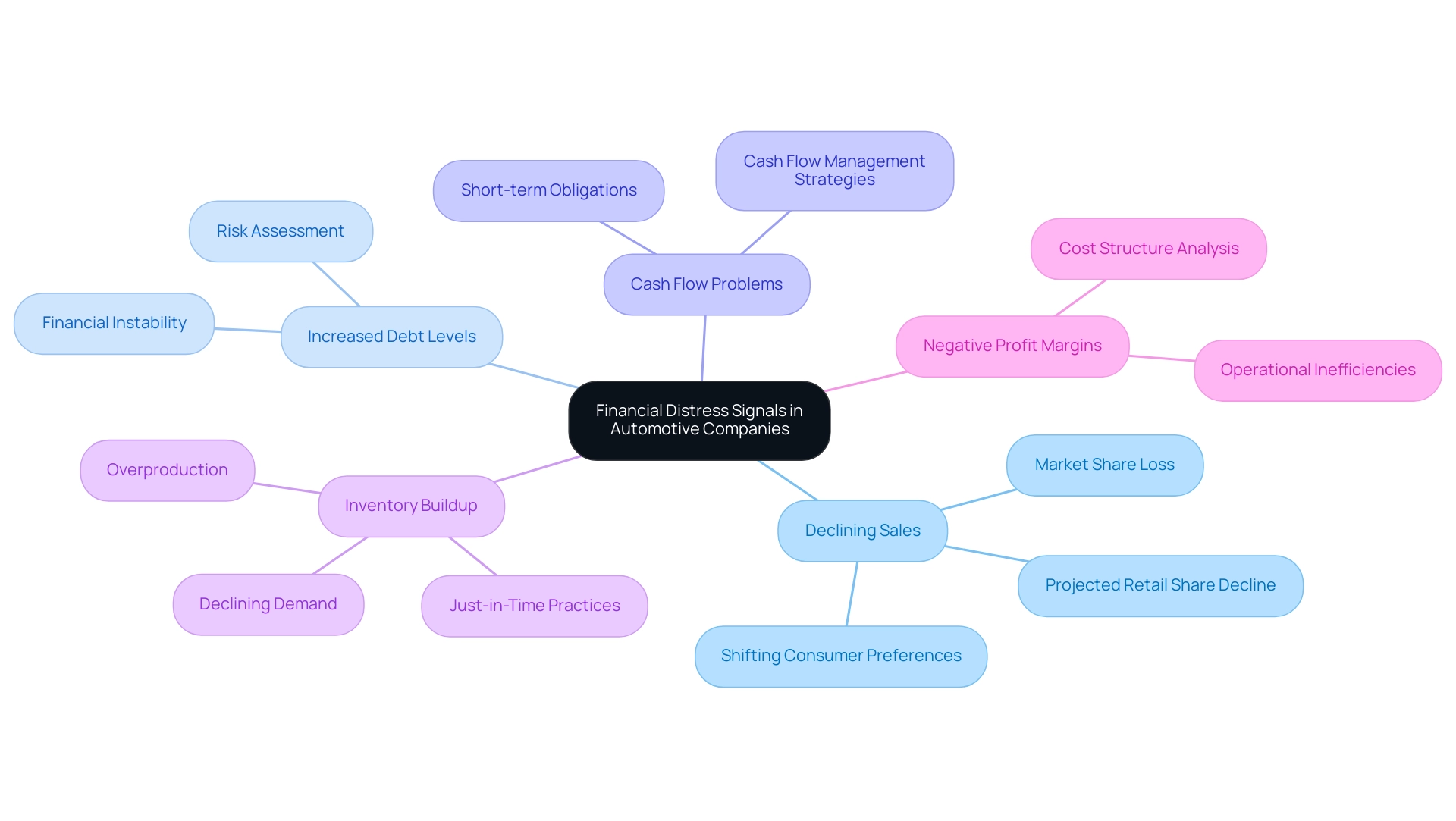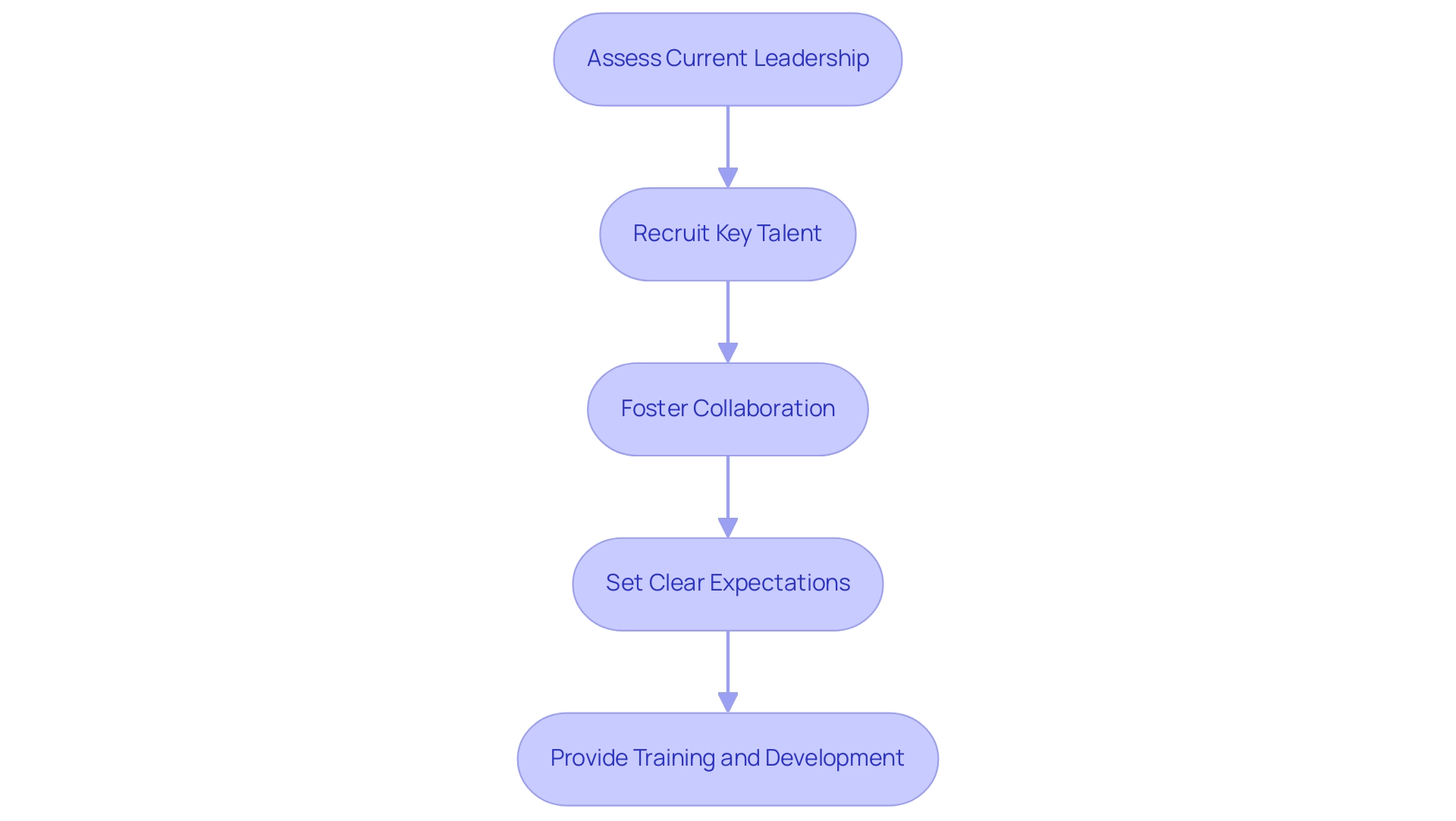Introduction
In the competitive landscape of the automotive industry, turnaround management has emerged as a critical strategy for revitalizing struggling companies. As consumer preferences shift and competition intensifies, automotive leaders must navigate a complex array of challenges, from operational inefficiencies to financial distress signals.
This article delves into the essential concepts of automotive turnaround management, offering a step-by-step approach to executing successful strategies that can enhance operational performance and drive sustainable growth.
By leveraging technology, engaging stakeholders, and fostering a culture of continuous improvement, organizations can not only survive but thrive in today’s dynamic market.
With insights from industry experts and real-world case studies, this guide provides the practical tools necessary for automotive companies to transform their fortunes and secure a robust market position.
Understanding Automotive Turnaround Management: Key Concepts and Importance
The management of revitalization in the vehicle industry is a strategic field that involves to rejuvenate struggling firms. Central to this approach are several key concepts, including:
- A thorough understanding of market dynamics
- The identification of operational inefficiencies
- The recognition of financial distress signals
The importance of efficient automotive turnaround management is underscored by swiftly changing consumer preferences and increased competition in the vehicle industry.
For example, Renault Group's revenue has shown fluctuations from 2010 to 2023, reflecting the market's volatility and the importance of strategic management in navigating these challenges. Research expert Mathilde Carlier notes that 'China and the United States were the largest markets for this segment in 2023, partly due to a culture of mass-motorization prevalent in the United States.' In such a landscape, automotive turnaround management is crucial for automotive companies to adapt swiftly to ensure survival and growth.
Leveraging AI and machine learning can revolutionize operations by enabling streamlined decision-making and real-time analytics for performance monitoring. A notable example of successful automotive turnaround management is the Auto Warranty Commitment Program (AWCP), which provided loans to protect warranties on new vehicles purchased from GM and Chrysler during their restructuring. This initiative enabled the Treasury to reclaim all funds allocated under the warranty program, illustrating how effective recovery methods can result in improved cash flow, enhanced operational efficiency, and a stronger market position.
By implementing the lessons learned throughout the recovery process, automotive firms can leverage automotive turnaround management to establish strong, lasting relationships with stakeholders and position themselves for future success. Furthermore, testing hypotheses and facilitating rapid decision-making are crucial elements of the turnaround process, enabling companies to adjust approaches based on real-time data. Our client dashboard offers real-time business analytics, continuously assessing business health and allowing prompt modifications to approaches.
Understanding these critical elements is essential for implementing effective strategies in automotive turnaround management that can significantly transform a business's fortunes in today’s challenging environment.
A Step-by-Step Approach to Executing Successful Turnarounds in Automotive Companies
- Conduct a Comprehensive Assessment: Start by thoroughly evaluating the company’s financial health. This involves a deep dive into cash flow, profitability, and operational efficiency, which will help pinpoint critical areas that require immediate attention. With a pragmatic approach to data, testing every hypothesis is essential to deliver maximum return on invested capital in both the short and long term. A robust financial assessment is crucial for identifying potential risks and opportunities within .
- Engage Stakeholders: Actively communicate with key stakeholders such as employees, suppliers, and investors. Their insights are invaluable and can encourage the essential support for your recovery efforts. Engaging stakeholders enhances transparency and builds a collaborative environment essential for driving change. As mentioned by Davinderpreet S Gugnani, "Stakeholder engagement is essential to ensuring that all voices are heard and that the plan is aligned with the needs of those involved."
- Develop a Strategic Plan: Craft a detailed recovery plan that outlines specific goals, timelines, and resources needed for execution. This plan should encompass initiatives for cost reduction, revenue enhancement, and operational improvements, ensuring a comprehensive approach to recovery.
- Implement Operational Changes: Concentrate on streamlining processes and reducing waste to enhance productivity. This may necessitate restructuring teams, renegotiating supplier contracts, or investing in advanced technologies. The goal is to create a more agile and responsive organization capable of adapting to market demands. The findings from the EY Mobility Consumer Index indicate a slowdown in electric vehicle (EV) sales, highlighting the importance of automotive turnaround management for companies to innovate and adjust their approaches accordingly.
- Monitor Progress and Adjust: Regularly evaluate the execution of your recovery plan using key performance indicators (KPIs). This ongoing evaluation allows for timely adjustments to strategies, ensuring that objectives are consistently met and the organization remains on track. Our client dashboard provides real-time business analytics to continually diagnose your business health, supporting a shortened decision-making cycle that enables swift responses to emerging challenges.
- Cultivate a Culture of Continuous Improvement: Foster a mindset of ongoing evaluation and adaptation within your organization. By implementing the lessons gained during the transformation process, you not only maintain the successes accomplished but also ready your organization to face future challenges effectively. Building strong, lasting relationships through continuous improvement will help ensure long-term success.
By following these strategic steps and incorporating insights from industry experts and pertinent case studies, manufacturers can successfully navigate through crises, emerging stronger and more resilient, while positioning themselves for sustained long-term success.

Identifying Financial Distress Signals in Automotive Companies
In the vehicle industry, recognizing financial distress signals is crucial for timely intervention and effective strategies. Key indicators include:
- Declining Sales: A persistent decrease in sales figures often points to a loss of market share or shifting consumer preferences. Recent trends indicate that the retail share of the vehicle industry is projected to decline by approximately nine percentage points from 2021 to around 79% in 2024, emphasizing the urgency for businesses to master their cash conversion cycle and monitor sales dynamics closely.
- Increased Debt Levels: A rising debt-to-equity ratio can signify financial instability. As vehicle manufacturers navigate a challenging landscape, understanding the average debt levels among struggling firms becomes essential for assessing relative risk and formulating strategic responses that optimize investment returns.
- Cash Flow Problems: Difficulty in meeting short-term obligations, such as payroll and supplier payments, serves as a critical warning sign of financial distress. Implementing a robust cash flow management strategy is necessary to mitigate this risk and maintain operational continuity while ensuring continuous performance monitoring.
- Inventory Buildup: Excessive inventory levels can indicate overproduction or declining demand, ultimately leading to cash flow challenges. With the vehicle industry experiencing fluctuations, adopting just-in-time inventory practices is essential for adapting to market changes effectively and streamlining decision-making processes.
- Negative Profit Margins: Consistently low or negative profit margins reveal operational inefficiencies. Organizations should regularly analyze their cost structures and operational processes to identify areas for improvement, operationalizing turnaround lessons learned from past experiences.
Being proactive in recognizing these financial distress signals allows automotive firms to implement necessary adjustments swiftly through automotive turnaround management. For instance, with 91.7% of U.S. households owning at least one vehicle, strong demand indicates consumer confidence, directing businesses in customizing their strategies for improved market alignment. Furthermore, understanding consumer behavior, as demonstrated by the statistic that 31.6% of total calls to dealerships result in an appointment, can aid in addressing financial distress signals and improving overall performance.
To effectively address these challenges, organizations should consider the '20 Strategies for Optimal Business Performance' that focus on mastering the cash conversion cycle. This includes methodologies such as 'Identify & Plan,' which involves assessing underlying business issues and collaboratively creating actionable plans, and 'Test & Measure,' which emphasizes data-driven decision-making to maximize returns on investment.

Leveraging Technology for Effective Turnaround Management
- Data Analytics: Harnessing data analytics tools is vital for automotive companies aiming to understand customer behavior, optimize operational efficiency, and identify market trends. This data not only guides strategic decisions but also assists in prioritizing improvement initiatives. Many organizations start realizing benefits within just weeks of implementing these systems, underscoring the urgency of adoption. As BMW's Global Head of Brand and Product Management notes, effective organizational processes are key to maximizing the potential of tools like GenAI, which can significantly improve operational efficiency and decision-making, especially in conjunction with expert guidance from our Business Valuation Report, authored by Peter Griscom, M.S., David Bates, CFP, CPA, and Chase Hudson, MBA, Lean Six Sigma Black Belt. The initial costs for implementing comprehensive data analytics systems can range from $50,000 to $500,000 depending on the complexity, but these costs are outweighed by the long-term benefits seen as early as three to six months post-implementation.
- Supply Chain Management Software: Implementing advanced supply chain management software can significantly enhance inventory oversight, streamline logistics, and strengthen supplier relationships. These enhancements result in cost savings and increased service levels, vital for a successful recovery. For instance, BCG's development of a customer-centric build-to-stock sales platform has proven effective, reducing days on lot by 30% for a global car manufacturer, showcasing the power of operationalizing lessons learned during turnaround processes.
- Customer Relationship Management (CRM): enables automotive companies to gain deeper insights into customer needs and preferences, fostering enhanced engagement and ultimately driving sales. By aligning sales approaches with customer insights, organizations can better respond to market demands and enhance overall performance, facilitating a quicker decision-making cycle.
- Automation: Embracing automation across manufacturing and administrative processes is another crucial strategy for reducing costs and increasing efficiency. Automation reduces human mistakes, resulting in substantial operational enhancements during a changeover. The integration of AI and machine learning into quality and warranty processes can yield visible benefits within as little as three months, provided organizations assess current practices and create a clear implementation roadmap backed by expert strategies.
- Financial Management Tools: Utilizing financial management software is critical in monitoring cash flow, managing budgets, and ensuring compliance with financial regulations—especially during recovery phases. Our Business Valuation Report provides essential insights to maximize the impact of these investments. By effectively leveraging these technologies and expert guidance, automotive companies can not only streamline operations but also enhance their agility in responding to challenges during a recovery. For more details on how our team can assist your business's recovery strategy, please reach out to us.
Building a Strong Leadership Team for Turnaround Success
- Assess Current Leadership: Begin by conducting a thorough evaluation of the existing leadership team. Identify strengths, weaknesses, and skill gaps that may hinder the recovery process. This assessment is crucial as team psychological safety, which is positively correlated with innovative performance (r = 0.360, p < 0.01), plays a vital role in fostering a culture of creativity and problem-solving.
- Recruit Key Talent: If gaps are identified, prioritize recruiting seasoned leaders like Peter Griscom, M.S., a renowned expert in manufacturing and technology integration with a proven history of leading successful transformations. Their diverse experiences can introduce fresh perspectives and innovative solutions essential for revitalizing operations. Jason Collyer, a Top 100 COO with expertise in defense, aviation entrepreneurship, and supply chain transformation, exemplifies the caliber of leadership needed for such initiatives.
- Foster Collaboration: Promote a culture of collaboration among the leadership team. Regular meetings and open lines of communication are crucial in ensuring all members are aligned with the overarching goals and strategies of the recovery initiative. As Edmondson and Lei state, psychological safety can manifest at various levels, emphasizing the need for leaders to cultivate supportive environments that encourage team engagement.
- Set Clear Expectations: Establish clear roles and responsibilities within the leadership team. Ensure that each leader comprehends their specific contributions to the recovery effort. Clarity in expectations not only streamlines decision-making but also fosters accountability.
- Provide Training and Development: Invest in leadership development programs aimed at enhancing the skills and capabilities of your team. This investment is essential for equipping leaders to manage the challenges inherent in transformations effectively. Data aggregation studies have shown strong correlations between inclusive leadership and team performance, validating the importance of . For instance, a case study on data aggregation for team-level analysis illustrated how inclusive leadership can greatly affect team performance, emphasizing the necessity for ongoing development.
By concentrating on establishing a strong leadership team, automotive companies can greatly enhance their opportunities for achieving successful transformations through automotive turnaround management and fostering sustainable growth in 2024 and beyond. With over 75 successful engagements, our consulting services ensure that the expertise of leaders like Griscom and Collyer translates into actionable strategies for clients. The insights from Javed B. et al. further underscore that inclusive leadership is pivotal in fostering innovative work behavior, which is essential for turnaround success.

Conclusion
In the rapidly evolving automotive industry, effective turnaround management is essential for companies facing challenges such as operational inefficiencies and financial distress. By understanding market dynamics and leveraging technology, automotive leaders can implement strategies that not only address immediate issues but also position their organizations for sustainable growth. Key steps include:
- Conducting comprehensive assessments
- Engaging stakeholders
- Developing strategic plans that facilitate operational changes
Recognizing financial distress signals is critical for timely intervention. Indicators such as:
- Declining sales
- Increased debt levels
- Cash flow problems
serve as alarms for automotive companies to take swift action. By employing data analytics, supply chain management software, and customer relationship management tools, organizations can enhance decision-making and streamline operations, ultimately leading to improved performance.
Building a strong leadership team is equally vital for successful turnarounds. By:
- Assessing current leadership
- Recruiting key talent
- Fostering collaboration
automotive companies can create an environment conducive to innovation and problem-solving. Investing in ongoing training and development further empowers leaders to navigate the complexities of turnaround efforts effectively.
In conclusion, by following a structured approach to turnaround management, automotive companies can not only address current challenges but also lay the groundwork for future success. Embracing continuous improvement and fostering a culture of agility will ensure that organizations remain competitive in an ever-changing market landscape. The time for decisive action is now; automotive leaders must seize the opportunity to transform their businesses and secure a robust market position.
Frequently Asked Questions
What is automotive turnaround management?
Automotive turnaround management is a strategic approach aimed at revitalizing struggling firms in the vehicle industry by addressing market dynamics, operational inefficiencies, and financial distress signals.
Why is automotive turnaround management important?
It is crucial due to rapidly changing consumer preferences and increased competition in the vehicle industry, which necessitates companies to adapt quickly for survival and growth.
What are some key concepts in automotive turnaround management?
Key concepts include understanding market dynamics, identifying operational inefficiencies, and recognizing financial distress signals.
Can you provide an example of successful automotive turnaround management?
The Auto Warranty Commitment Program (AWCP) is an example, which provided loans to protect warranties on new vehicles during GM and Chrysler's restructuring, resulting in improved cash flow and operational efficiency.
How can AI and machine learning assist in automotive turnaround management?
AI and machine learning can streamline decision-making and provide real-time analytics for performance monitoring, enhancing the efficiency of operations.
What steps should be taken for effective automotive turnaround management?
Steps include conducting a comprehensive assessment, engaging stakeholders, developing a strategic plan, implementing operational changes, monitoring progress, and cultivating a culture of continuous improvement.
How important is stakeholder engagement in turnaround management?
Engaging stakeholders is essential as it enhances transparency and builds a collaborative environment, ensuring that the recovery plan aligns with the needs of those involved.
What role do key performance indicators (KPIs) play in the recovery plan?
KPIs are used to regularly evaluate the execution of the recovery plan, allowing for timely adjustments to strategies to ensure objectives are met.
What is the significance of continuous improvement in automotive turnaround management?
Cultivating a culture of continuous improvement helps maintain successes achieved during the transformation process and prepares the organization for future challenges.




